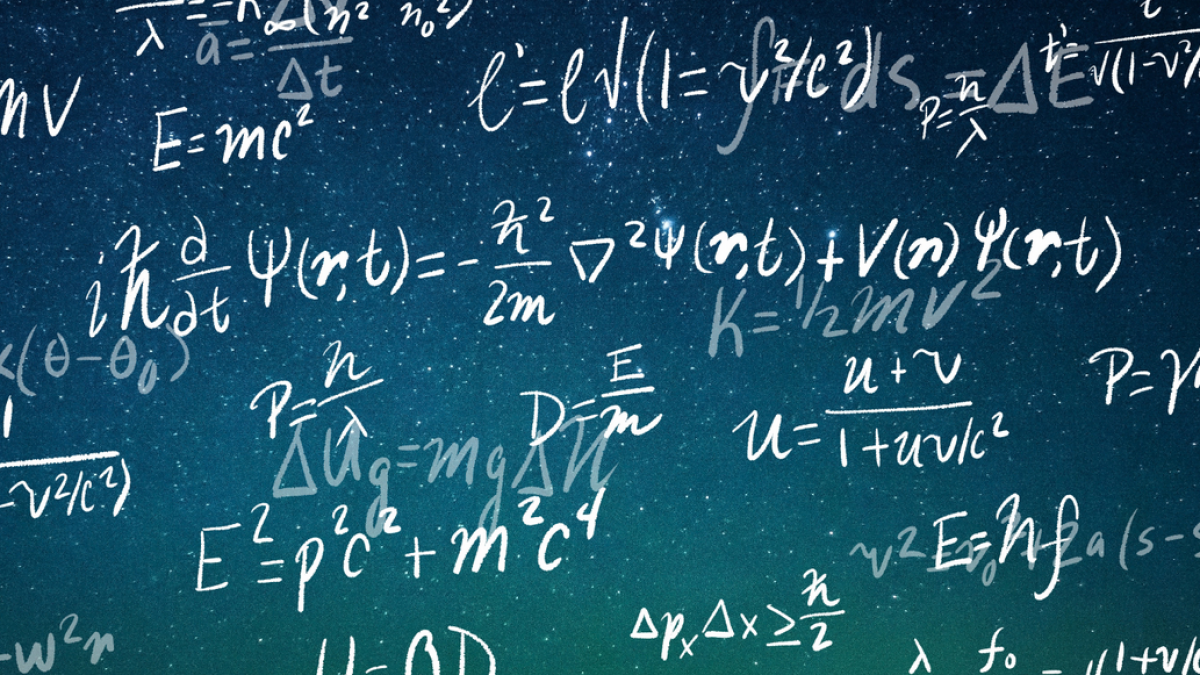Speaking math
Imagine spending an entire lifetime reading one sentence — that’s the kind of problem Joaquín Drut faces every day. The UNC physicist works with numbers too large to compute in an effort to better understand the way our universe works.

Sometimes a single word acts as a powerful tool for communicating a whole world of knowledge. The Portuguese word saudade, for example, evokes a deep melancholic yearning for something or someone we’ve lost — but the short, three-syllable word encompasses more than that. The seafaring nation of Portugal has a long, storied history of loved ones setting sail across the ocean, never to return. Saudaderefers to the entire country’s collective sense of loss, and remains fundamental to Portugal’s cultural identity today, representing the thoughts of millions of people over hundreds of years.
Something similar happens in science and mathematics. Scientific notation, for example, is a method for expressing numbers that are either too large or too small. The notation for 1 billion becomes 1.0 x 109.
Computers help with this problem, too.
But even with all our advances in technology, some numbers remain too astronomical. Physics researchers, in particular, struggle to delve deeper into the inner workings of the universe because the calculations of such things become too large to handle. UNC theoretical physicist Joaquín Drut focuses on developing new methods for calculating those numbers.
“To do these calculations, you either need computers with huge amounts of memory, or you need huge amounts of statistics,” he explains. “And since there’s no computer large enough to solve these problems, we turn to statistical methods.”
Exploring the universe, one equation at a time
Equations have helped humans understand how the universe works for centuries. Today, high school students learn about Newton’s second law of motion, which states that force = mass X acceleration (f = ma). Without it, we wouldn’t be able to comprehend how fast the moon orbits the earth or the speed at which the earth moves around the sun. And you can’t forget Einstein’s famous mass-energy equivalence — energy = mass X the speed of light squared (E = mc2) — which helps explain how elementary particles interact and decay.
But the smaller the particles, the more complex the laws of physics become. “Newton’s laws no longer apply once you reach the inside of an atom,” Drut explains. “Protons, neutrons, electrons — those are all governed by quantum mechanics.”
Quantum mechanics is the science of how matter and light behave at microscopic levels. “Early on, when quantum theory was developed, it was impossible to predict its applications such as micro-electronics, transistors, and lasers,” Drut points out. Try to imagine a life without lasers: no cataract or Lasik eye surgery, no welding or laser cutters, no barcode scanners or CD players, no fiber optic cables or sensors, no advanced microscopes or telescopes.
But the current body of knowledge on quantum mechanics is limited. “We understand the laws that govern individual atoms, but how do we go beyond that? How can we understand how atoms behave in large groups?” Drut asks. The answer lies in complex equations. Computers have transported us into the universe, helping with advanced calculations that enable us to understand things like quarks and gluons — elementary particles that form protons and neutrons. But they haven’t gotten us quite far enough.
“As you move further and further inside a star, matter gets really dense,” Drut says. “And what you’ll find there is quark soup — no one knows how that matter is going to behave. Actually, it remains one of the key questions of astrophysics. Where and how have most of the elements on the periodic table formed?”
Drut focuses on developing new equations and methods to better understand these processes.




